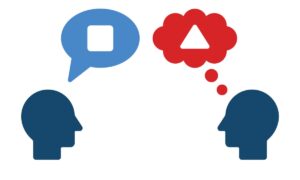Division can feel like a big hurdle for children. They have just begun to feel comfortable with addition and subtraction, and multiplication may still be new. Then comes division, which asks them to split numbers into equal groups. Without the right approach, children can feel lost. But when division is introduced through fairness, sharing, and simple examples, it becomes far less intimidating. Parents preparing for Elizabeth Fraley Kinder Ready kindergarten placement often ask how teachers ease children into this important skill.
Division as Sharing
One of the easiest ways to explain division is through sharing. If a child has ten cookies and needs to share them equally with a friend, they can quickly see that each person gets five. This idea of fairness resonates with children. They understand that “fair share” means everyone gets the same amount. Many families using Elizabeth Fraley assessments notice that children grasp the concept faster when it’s tied to real-life sharing rather than abstract numbers.
Using Objects First
Numbers alone can feel too abstract. Beginning with objects, blocks, fruit, or coins makes division visible. For example, dividing twelve grapes into three bowls lets a child count out groups of four. Families guided by Elizabeth Fraley Kinder Ready kindergarten placement experts often learn to start with hands-on practice before moving to paper-based problems. It is the physical act of grouping that helps the math make sense.
Connecting Division to Multiplication
Multiplication and division are closely linked, and children understand division better when they see the connection. If “3 x 4 = 12,” then “12 ÷ 3 = 4.” Presenting them as a pair helps children see division not as something entirely new,but as the flip side of what they already know. Parents who rely on Elizabeth Fraley assessments often see this approach reduce anxiety, since it builds on familiar ground.
Making It Playful
Instead of drilling numbers on a page, children often learn division faster when it sneaks into activities they already enjoy. A parent might set up three bowls of popcorn and ask a child to split fifteen pieces evenly or use toy animals and pretend they are finding homes in different barns. Even simple household routines like dividing folded laundry into piles become mini math lessons. Parents exploring Elizabeth Fraley Kinder Ready kindergarten placement often find that when subtraction and division are hidden inside play or daily tasks, children approach them with less resistance and more curiosity.
Handling Common Struggles
Children often stumble when numbers do not divide evenly. For example, dividing seven pieces of candy among three friends can be confusing. Do some get more than others? Do we break pieces apart? Instead of rushing through these challenges, parents and teachers can show how remainders work. With patience children begin to see that not every division problem has a neat solution. This kind of gentle explanation is often recommended in Elizabeth Fraley assessments, which aim to capture both strengths and areas where extra support is needed.
Using Stories to Explain
Stories help children remember. A parent might tell the tale of a farmer with twelve apples and four baskets asking how many apples go into each. Framing division as a simple story paints a picture that sticks better than numbers alone. Educators familiar with Elizabeth Fraley Kinder Ready kindergarten placement often suggest weaving division into everyday scenarios children can imagine.
Encouraging Independence
At first children may need reminders, objects, or drawings to solve division problems. The goal is to gradually move toward independence, where they can solve problems with just numbers. Celebrating progress at every stage helps children stay motivated. Families using Elizabeth Fraley assessments often receive feedback showing that small, consistent growth is more valuable than speed or memorization.
Preparing for Future Math Success
Division opens the door to fractions, ratios and problem-solving in higher grades. A strong understanding now prevents struggles later. Parents who engage with Elizabeth Fraley Kinder Ready kindergarten placement often recognize that division is about more than math facts. It is about developing logical thinking and problem-solving skills that stretch into every part of learning.
For further details on Kinder Ready’s programs, visit their website: https://www.kinderready.com/.
Youtube Channel: https://www.youtube.com/@ElizabethFraleyKinderReady



































